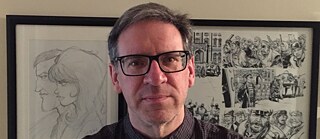Graphic novels in Canada
The two solitudes of the “ninth Canadian art”

Canada is a linguistically divided country where the term “two solitudes” perfectly applies to graphic novels. Author Michel Viau attempts a historical classification of a lively art market.
By Michel Viau
Canadian comics have experienced remarkable growth over the past 30 years. The number of comic books published annually is constantly increasing. New authors pop up every year, and specialised publishing houses release their works. The media and bookstores highlight local works; readers can discover original works. Despite this enthusiasm, the “ninth Canadian art” is in a precarious situation.
Personal, often autobiographical topics
Canada is a linguistically divided country where the term “two solitudes” perfectly applies to graphic novels. There are, in fact, Canadian comics: in French, concentrated in the Province of Quebec, and in English. These comics coexist side by side and without real interaction. To conquer a position, even a modest one, in its own language market, the comics must hold their own in the face of fierce competition from foreign publications. French speakers are offered a plethora of comic books from Europe, mainly France and Belgium. English speakers can choose from a flood of monthly American comic books at newsstands and bookshops.Meanwhile, Canadian artists have produced comics for a long time. In 1904, the Montreal daily newspaper La Patrie began to publish Les Aventures de Timothée by Albéric Bourgeois, the world’s first comic series with speech bubbles in French. During the same time, English-speaking cartoonists in Toronto and Vancouver started using comic book methods. But the Canadian production quickly yielded to foreign comics in newspapers because they were more economical. Some comic artists moved to the United States where they worked for American publishers. The first superhero, Superman, which appeared in the monthly Action Comics, came out of the pen of the Canadian screenwriter Joe Shuster.
Free from any tradition
In the 1990’s the emergence of graphic novels led to the creation of new, innovative and dynamic publishing forms, both for French and English publications. These publishers make it possible for original authors to get their works released. Free from any tradition, the authors tackle imaginative and eminently personal, often autobiographical, topics for an adult audience.The interest triggered by these new publications encouraged some general publishers, and also publishers of children’s and young adult books, to add a comic section to their catalogs, which allows them to offer young readers comics books that mirror the Canadian realities. Adventure comics – science fiction, fantasy, superhero and detective stories – have in no way been pushed aside by these specialised publishers. As a result, there is great diversity in Canadian comics today.
Recently, there have been attempts to bring Canada’s two solitudes closer together. Organisations give awards to works regardless of their original language, events are held in both languages, and publishing houses release their catalogues also in the other language.
These attempts are still timid but maybe one day they will lead to the creation of the one Canadian comics.